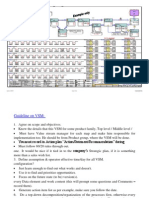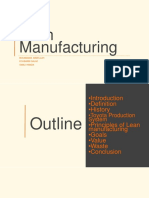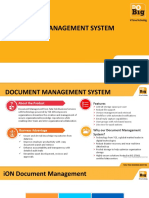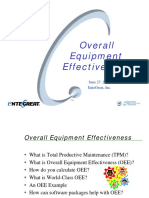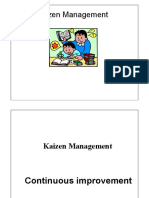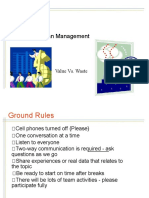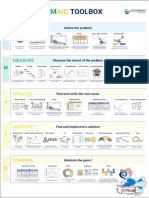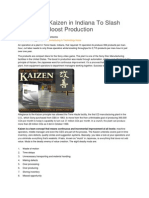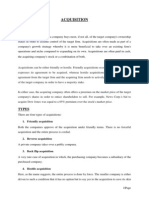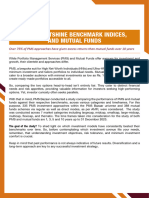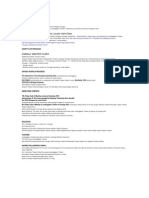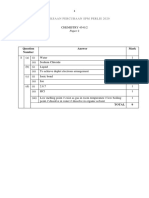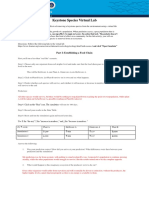Acquisition Process
Madan Mohan Richi Buru Tuti B.F.Tech(Semester-6) 4/15/2014
National Institute of Fashion Technology, Hyderabad
�Business Acquisition
A corporate action in which a company buys most, if not all, of the target company's ownership stakes in order to assume control of the target firm. Ac uisitions are often made as part of a company's growth strategy whereby it is more beneficial to take o!er an e"isting firm's operations and niche compared to e"panding on its own. Ac uisitions are often paid in cash, the ac uiring company's stock or a combination of both. Ac uisitions can be either friendly or hostile. Friendly ac uisitions occur when the target firm e"presses its agreement to be ac uired, whereas hostile ac uisitions don't ha!e the same agreement from the target firm and the ac uiring firm needs to acti!ely purchase large stakes of the target company in order to ha!e a ma#ority stake. In either case, the ac uiring company often offers a premium on the market price of the target company's shares in order to entice shareholders to sell. For e"ample, News $orp.'s bid to ac uire %ow &ones was e ual to a '() premium o!er the stock's market price.
Acquisition Process
The ac uisition of companies should not be a scattershot approach, since the ac uiring entity will end up with a #umble of unrelated businesses. Instead, a serial ac uirer typically builds a database of the companies competing in the market in which it has an interest. This may be organi*ed as a matri", with each company categori*ed by such factors as re!enue, profitability, cash flow, and growth rate, number of employees, products, intellectual property, and so forth. The database will ne!er be complete, since pri!ately+held companies in particular are not willing to re!eal information about them. There are many sources of information that can be used to continually impro!e the database, such as public company filings, personal contacts, third party reports, and patent analysis. The ac uirer should also maintain a listing of the ac uisitions that ha!e taken place in the industry recently, with particular attention to the market niches in which they are most common. This is useful for discerning the prices at which other sellers might e"pect to be sold, since e!eryone in the industry reads the same press releases, and so is aware of the ac uisitions. A recent upsurge in prices might indicate to an ac uirer that
�the market is o!erheated, and so is not worth participating in during the near term. This section is an o!er!iew of the buy+sell process that is detailed in the book. ,f course, e!ery business ac uisition deal is different and no deal will follow these steps to the letter. Howe!er, most strategic ac uisitions do follow most of the stages outlined here.
Non-Disclosure Agreement
If the target company concludes that it may ha!e an interest in selling to the ac uirer, the parties sign a non+disclosure agreement -N%A.. This document states that all information stamped as confidential will be treated as such, that the information will not be issued to other parties, and that it will be returned upon re uest. These agreements can be difficult to enforce, but are nonetheless necessary.
Initial Negotiation
The initial uestion in any ac uisition is whether the transaction should be structured as an asset purchase or share purchase. The answer depends upon a number of factors, including/ timing, risk allocation -i.e. the liabilities, claims and encumbrances associated with the business., ease of implementation and ta" consideration. In a share purchase transaction, the purchaser ac uires the corporation itself, with all of the underlying assets and liabilities. A share purchase is generally faster to complete and less comple" than an asset ac uisition 0 and it a!oids many of the practical problems associated with a transfer of particular assets -such as the common re uirement to obtain consent from third parties + although this may be re uired in certain cases + or to ha!e the assets re+titled in the purchaser1s name.. From a !endor1s perspecti!e, a share transaction may be more ta" ad!antageous than an asset purchase. This is because no 23T or 43T is payable on the sale of shares/ ta" liability is limited solely to ta"es on any applicable capital gains -which in itself recei!e fa!ourable ta" treatment in comparison to ta" on income.. 5oreo!er, ta"es paid on capital gains may be minimi*ed further if the business ualifies for a capital gains e"emption as a 3mall 6usiness $orporation. ,n the other hand, the !endor in a share transaction is unable to retain any e"isting losses -if any. in the corporation in order to off+set against future income.
�In an asset purchase transaction, the purchaser selects which assets of the business -and accompanying liabilities. it wishes to purchase/ it also gets to decide which assets and liabilities it wishes to e"clude. 7iabilities not assumed by the purchaser, particularly unknown liabilities, will remain the responsibility of the !endor. An asset purchase is often the more fa!ourable structure for a purchaser or if the !endor is selling one di!ision of a corporation while maintaining another. A sale of assets will generally be less fa!ourable to the !endor from a ta" perspecti!e. This is because the sale is ta"ed at two le!els/ to the corporation when it sells its assets8 and, to the shareholder -i.e. !endor. when the profits are distributed by the corporation. In an asset purchase, howe!er, the !endor retains the ability to use e"isting ta" losses in the corporation.
Letter of Intent
In many transactions, the purchaser and the !endor will e"ecute a letter of intent. A letter of intent -which is sometimes called a memorandum of understanding. is a written agreement between two or more parties which is meant to confirm fundamental terms or indicate interest by a potential purchaser, as well as to open a dialogue for negotiations. It is a relati!ely straightforward document setting out the proposed terms of the transaction. If a deal is e!entually consummated, the letter of intent may memoriali*e the ma#or terms upon which a definiti!e agreement will be based. A letter of intent may be binding or non+binding or a combination of both. In most cases, the letter of intent will contain binding pro!isions 0 for e"ample, terms with respect to non+disclosure, co!enants to negotiate in good faith or 9no+shop: pro!isions granting the proposed purchaser with an e"clusi!e right to negotiate for a specified term 0 e!en if the other sections of a letter of intent are non+binding. The purposes of a letter of intent include/ 1 2 3 4 $larifying the key points of a comple" transaction for the con!enience of the parties %eclaring officially that the parties are currently negotiating 4re!enting the !endor from dealing with third parties while a transaction is being negotiated 4ro!iding safeguards in case a deal collapses during negotiation
6inding a party to the terms of a proposed transaction e!en prior to the completion of all applicable conditions -in the case of a binding letter of intent..
Due Diligence
;egardless of the structure of the transaction, a purchaser will ultimately be most concerned with the condition of the business it is purchasing and the liabilities it is inheriting. As a result, in addition to obtaining appropriate representations, warranties and co!enants from the !endor in the purchase agreement, a purchaser will seek to protect itself by conducting a due diligence re!iew of the business and its assets.
Final Negotiation
The due diligence process can re uire a number of weeks to complete, with a few stray documents being located well after the main body of information has been analy*ed. ,nce the bulk of the information has been re!iewed, the due diligence team leader can ad!ise the senior management of the ac uirer regarding issues found and any remaining areas of uncertainty, which can be used to ad#ust the initial calculation of the price that the ac uirer is willing to offer. The usual result is a decrease in the price offered. If the ac uirer wants to continue with the ac uisition, it presents the seller with the first draft of a purchase agreement. 3ince the ac uirer is controlling the document, it usually begins with a draft that contains terms more fa!orable to it. The attorney working for the seller must bring any unsatisfactory terms to the attention of the seller, for decisions regarding how they can be ad#usted. If the seller does not retain an attorney who speciali*es in purchase agreements, the seller will likely agree to terms that fa!our the ac uirer. The parties may not agree to a deal. A serial ac uirer should ha!e considerable e"perience with which types of target companies it can successfully integrate into its operations, as well as the ma"imum price beyond which a deal is no longer economically !iable. Thus, the ac uirer should compare any proposed deal to its internal list of success criteria, and walk away if need be. 3imilarly, since the ac uirer likely has a hard cap abo!e which it will not increase its price, the seller must decide if the proposed price is ade uate, and may elect to terminate the discussions.
�Definitive Agreement
In parallel with %% abo!e, buyer1s attorney, in support of the 7,I, tenders definiti!e agreement and all support documents. ;eser!ation is made to amend based on due diligence re!iew. This is the formal document detailing the terms of the sale as agreed to by the parties. 7oose ends from the 7oI are tied up in this document. It is also called as 94urchase and 3ales Agreement:. ,ften, the lawyers are working on the 4<3 while due diligence is underway. Typically, there is a good deal of back and forth between the buyer's lawyer and seller's lawyer as the details are hammered out.
Closing
The closing is the final step in the ac uisition process when papers are signed, money changes hands, and the company becomes yours. Traditionally, closings take place in a lawyer's office or conference room with all the parties sitting around a table and signing lots of forms. Howe!er, many closings now are largely done using fa" and email such that the principles to the deal and their legal ad!isors are many miles apart.
Post-Closing
Now that you own your target company, it's time to operate it to make sure it achie!es the intended goals. =our first order of business is to keep your new company's employees and customers happy. 5ake especially sure you keep the former owner-s., who is probably now your employee, happy. 4ress release, presentation with uestions and answers for employees, strategy for communication to all rele!ant parties 0 employees, customers, suppliers, bankers, and ser!ice pro!iders, this process is a >blit*1 effort to ma"imi*e e!eryone1s awareness and to do so in the shortest period possible so that minimal disruption of the business occurs. ?"ecution of first wa!e of post closing acti!ities to implement agreed actions, designed to preser!e the business and then to achie!e the controls, growth, and synergies forming the basis for the 9deal@





